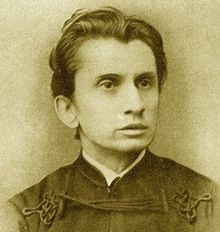In the nineteenth century Leopold von Sacher-Masoch created the term “A Law of the Commune,” a collective guarantee and the modus operandi of a Dionysian Weltanschauung with its characteristic autochthony of collective somatics. It is precisely this, in the opinion of the father of masochism, which fermented relations within peasant families, collectives and agrarian sects. Such forms of corporeality, under the conditions of their transplantation to an urban milieu, proved to have a rare gift for converting the other into the same and manifested an appetite for autonomy, for collapsing in upon themselves (ghettocentrism).

Immediately after the Revolution, Lenin issued a requisition order for city apartments (especially in the central areas) in order to divide them up among the poor: the norm was set at one room per person. By 1924, this norm was reduced to eight square meters per person. Following Lenin’s death in 1924 and the concurrent curtailing of the NEP (New Economic Policy) in Soviet Russia, there began a period of collectivization identifiable with the initial steps of the so-called Stalinist revolution. The peasantry, which in pre-Revolutionary Russia had constituted the overwhelming majority of the population, was, for the most part, forcibly recruited into collective farms. The remainder were either wiped out or banished to distant regions of the country to perform forced labor. A significant number were compelled to migrate to urban areas. This last phenomenon engendered a housing problem of enormous proportions, one that even today awaits a solution. Stalin exploited this situation in order to further his project of de-individualizing the consciousness and the daily life of the Soviet people. City apartments, as provided by law, became as populous as anthills. This “uplotnenie” reached its climax when two or three different tenants were compelled to live in one room. Families of every social, national, and culture-ethnic group were forced to cleave together into a single communal body.
The urban peasantry of Stalin’s epoch not only swallowed and assimilated other forms of class identity (such as the proletariat and intelligentsia), but also “erected” their own “house of being” known as “communal speech corporeality.” In this (pseudo-Heideggerian) “house,” as Kabakov said, “the degree of the helplessness of communal life before the outside world is horrifying. No one in a communal apartment will fix a loose board or a broken faucet, because all these functions from eviction to repairs are performed by it.” (2) Alongside the communal speech that immeasurably dominated transplanted urban domiciles, homo-communalis knew another (Apollonian), extra-communal speech: the voice of power (the rhetoric of the polis) that blared from Soviet radios. On the level of artistic practices, this voice reified itself in the form of what, following Max Horkheimer, may be called the “affirmative culture” of Socialist Realism. Interrelations between the latter and communal speech gradually evolved from dialogical to antithetical, i.e., from a Bakhtinian “two-world condition” to a binary opposition (the de-individualizing imperatives of “A Law of the Commune” versus the ultimate individualism of autocratic power as personified by Stalin, Krushchev, or Brezhnev). The gap that divided these clashing rocks provided a niche for a third language. Both Monastyrsky’s conceptualism and the actions of the CA group gravitated toward the textuality of this scheme.